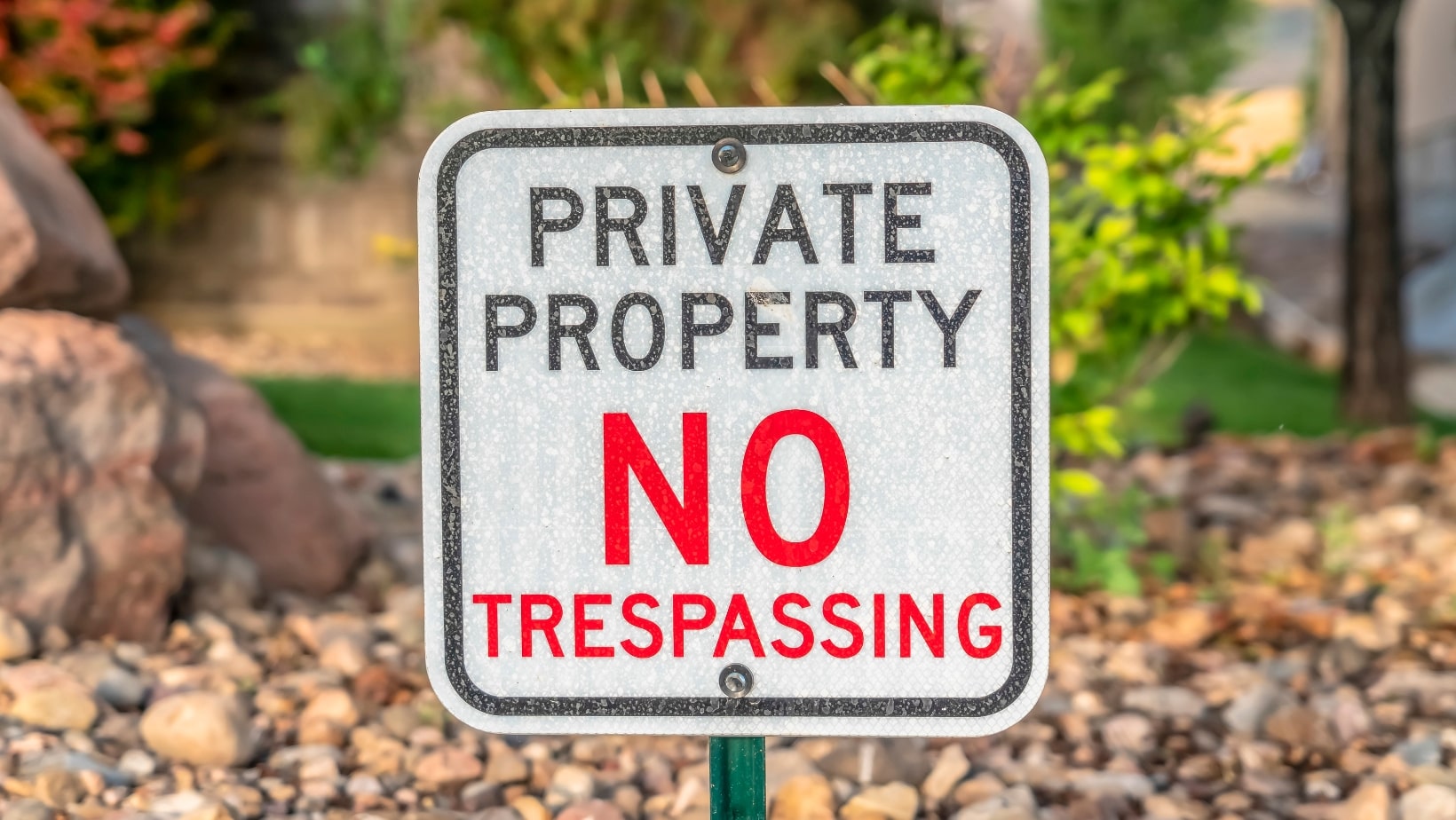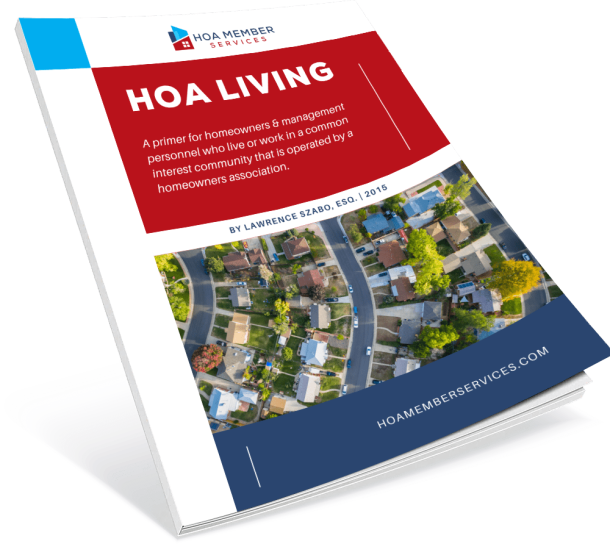Imagine you’re soaking up the sun in your backyard, savoring a moment of peace, when suddenly, a representative from your Homeowners Association (HOA) strolls right in. Unannounced. Uninvited.
You sit up, heart racing a bit. Wait—can they really do that? Is this legal?
So, can the HOA just enter your backyard like that? Well, in most cases, the answer is no. An HOA cannot legally trespass on your property without your consent unless they have a valid reason.
But what exactly qualifies as a reasonable cause? And what rights do you have when the HOA just barges onto your property like an uninvited guest? Let’s break it all down.
In this article, we’ll explore the nuances of HOA trespassing, unraveling the rules and your rights as a homeowner. So, get ready to arm yourself with the knowledge to handle unexpected visits from your HOA representative confidently.

Understanding HOA Authority and Boundaries
HOAs often wield more power than homeowners initially realize. They’re typically granted authority through the community’s rules, bylaws, and covenants that come with the territory.
These documents give them the power to enforce standards to keep the community looking tidy and well-maintained. For example, they might have rules to make sure lawns are trimmed, homes are built with the right architectural style, and painted the right shade.
They can also enforce regulations to keep streets free of unsightly debris and ensure the cars are parked right. They’re there to maintain the neighborhood’s curb appeal and improve property values, which is generally a good thing.
However, it’s crucial to remember that their power is not limitless, and they can’t waltz into your backyard uninvited. There’s a legal concept in real estate called “easement” that’s relevant here.
In HOA communities, an easement might allow limited access to your property for specific purposes (like utility maintenance), but it’s not a free pass for trespassing. Understanding this fine line can empower homeowners to push back when HOAs overreach.
Where Does HOA Power End?
So, can the HOA tell you what to do inside your house? Yes, but with some big caveats — they can’t just show up on your doorstep and roam around your property whenever they want.
That’s right; an HOA’s reach extends to setting and enforcing community rules, but it doesn’t override your rights as a homeowner. They must comply with state and local laws, and their power ends where privacy laws and property rights begin.
This means that while they can send you a strongly worded letter about that unruly hedge or insist on certain exterior modifications, they cannot cross onto your property to inspect or remedy issues without following proper legal protocols.
Essentially, they can tell you what to do, but they can’t always legally enforce how or when directly on your property.
The Concept of ‘Common Areas’ vs. ‘Private Property’
Now, why might an HOA think they have a right to enter your property? It boils down to the difference between ‘common areas’ and ‘private property.’
Common areas like parks, pools, and sidewalks fall under the HOA’s jurisdiction, and they’re responsible for maintaining these spaces. When it comes to your yard or home, however, that’s your domain.
This distinction can get blurry, especially if your property borders a shared space, leading some HOAs to overstep. For instance, HOAs often have guidelines for what goes on in your backyard to maintain a certain standard throughout the community.
Whether it’s the fence height, types of landscaping, or even the presence of sheds, they might argue that it affects the community’s aesthetics.
However, this doesn’t grant the HOA free access to your backyard, and at the end of the day, your private property remains private. The distinction lies in the HOA board’s authority to regulate versus their right to access.

Common Reasons an HOA Might Want to Enter Your Property
Here are some typical circumstances where HOAs might want to enter a homeowner’s property:
Inspections
HOAs love their rules, and part of that love means routine inspections to make sure everyone’s playing by them. They might want to peek over your fence (sometimes literally) to check if your lawn is up to the community standards or if your fence is in line with the regulations.
It’s all about keeping that uniform look the HOA aims for. They probably won’t barge in, but they might come close to the property line or walk around the exterior to make sure everything’s in check.
Maintenance
Now, this one’s a bit tricky. If the HOA is responsible for maintaining certain features, like shared fences or landscaping, they might argue that they need access to your yard to handle repairs or upkeep.
This can also blur the lines of trespassing on a condominium property because HOAs in condo complexes often have more leeway to enter your unit.
Since many of these buildings have shared systems, HOAs often have the right to set foot on your property to maintain common elements. This can include anything from central ducts or heating systems to plumbing that runs through your walls.
Safety and Security Concerns
Safety is a card the HOA can play when they think something on your property could pose a risk to other residents in the community. Let’s say a fence is down, or maybe there’s a pile of potentially hazardous materials in your yard.
If your house looks like it might be a physical safety issue, the HOA may decide they need to step in to address the concern. Of course, they should inform you first, but in some cases, they might act quickly if they believe there’s an immediate threat.
Emergencies
This is probably the most understandable scenario. If there’s a storm, a broken pipe, a fire, or a gas leak, the HOA might need to access your property for everyone’s safety.
In these cases, they’re less likely to ask for permission and more likely to take immediate action to prevent widespread damage.
Usually, when an HOA enters a homeowner’s property during an emergency, most homeowners cooperate because, of course, nobody wants a neighborhood disaster.
Rule Violations
This is where things can get a little tense. Say you’ve added a new deck to your house or planted a row of garden gnomes that weren’t exactly in the HOA’s aesthetic guidelines. Or maybe you’ve got a new dog even though your HOA doesn’t allow pets.
If they believe there’s a community rule violation, such as an unapproved home addition, or they hear a dog barking in your house, they may attempt to inspect the situation firsthand or obtain a court order to enforce compliance.
Now, while all these situations sound reasonable, the line between HOA access and trespassing is razor-thin. That’s why it’s important to note the difference between these scenarios and outright trespassing, so you know when they’re acting within their rights and when you might need to push back.

Does the HOA Have the Legal Right to Enter Your Property?
Well, the short answer is: sometimes. But there are a lot of “ifs” and “buts” involved. Let’s break it down in a way that makes sense so you know exactly where you stand.
When Can an HOA Legally Enter Your Property?
There are definitely times when the HOA has the legal right to step onto a homeowner’s property, but these situations are usually rare and clearly defined. For instance, as mentioned earlier, emergencies like a water leak affecting multiple homes might warrant immediate entry.
Or, in less urgent cases, it’s typically about essential routine maintenance that’s explicitly mentioned in HOA agreements.
In these cases, the association isn’t trespassing because the rules were set in advance and agreed upon when you moved into the HOA community. So, if your HOA has a clause about fixing shared fences, they might be in the clear.
When Is HOA Entry Considered Trespassing?
Trespassing happens when someone enters another person’s property without proper authorization, notice, or legal grounds.
So, if your HOA walks onto your property without your consent, without giving you advance notice, or simply doesn’t have a legitimate reason to be there, they could be crossing the line into trespassing territory.
In fact, some homeowners have successfully challenged their HOA for trespassing in court, proving that the HOA isn’t above the law.
So, in a nutshell, even though HOAs have certain rights, they can’t pop in uninvited and start inspecting your flower beds just because they “felt like it!”

What Determines Whether HOA Entry is Legal?:
Here are a few key factors that play into whether an HOA is within its rights or stepping into trespassing territory:
- HOA’s Governing DocumentsYour HOA’s governing documents, like the Covenants, Conditions, and Restrictions (CC&Rs), usually outline the HOA’s rights to enter your property. If there’s a clause allowing access for specific reasons, then the HOA might have some legal grounds.But if those documents are vague or don’t mention anything about property access, the HOA can’t just wander into your property whenever they please.
- State LawsProperty laws, including trespassing, vary by state and locality. In many places, state and local laws are pretty strict about private property rights.Some states require explicit consent before anyone, including an HOA, can step onto your property, while others might be a bit more lenient if it’s an emergency situation.So, checking your state’s specific laws can give you a clearer picture of your rights. If your state laws lean heavily in favor of homeowners, the HOA must tread carefully — literally.
- HOA BylawsTypically, most HOA bylaws require the board to provide sufficient prior notice and get consent before they can enter someone’s property. This notice is often required to be in writing, and the period can vary; sometimes it’s 24 hours, and sometimes it’s a week.If your HOA doesn’t follow the notice and consent guidelines outlined in their bylaws and shows up without warning, their entry could very well be illegal. In this case, you have every right to take action.
What Actions Can You Take in Case of HOA Trespassing?
If your HOA has crossed the line and trespassed on your property, it’s important to act quickly and assertively. Here’s a breakdown of what you can do to protect your property and stand up to your HOA:
1. Document the Incident
The first thing you should do is start gathering evidence. If you suspect your HOA has trespassed, grab your phone or camera and take as many photos as you can. Capture any signs of damage or anything else that seems out of place.
Jot down specific dates and times you noticed the trespassing, and if you have any neighbors or witnesses who saw what happened, ask them if they’d be willing to provide a statement.
This documentation is key; it provides you with concrete proof, which can be incredibly helpful to strengthen your case if things escalate later on.
2. Check the HOA Documents
Before you confront the board, dig up the HOA’s governing documents — those lengthy CC&Rs, bylaws, and any other rules or agreements you probably skimmed when you moved in.
This step is crucial because sometimes the HOA might actually have certain access rights written into these documents that you’ve signed, which could explain their actions.
On the flip side, if the HOA has overstepped its boundaries, this is where you’ll find the evidence you need to challenge them.
3. Communicate
Before things get too heated, reach out to the HOA directly. Draft a calm, formal letter or email explaining your concerns and asking for clarification about why they were on your property.
Also, reference the specific part of the documents that you believe they’ve violated. Clear communication can sometimes resolve the issue before it spirals out of control.
You might be surprised — sometimes, miscommunication or a simple misunderstanding can be the root of the issue. By keeping the conversation polite and professional, you set the tone for a more constructive dialogue.
Plus, it shows the HOA that you’re serious about your property rights.

4. Know Your Rights
It’s essential to know where you stand legally, and this is where you become your own advocate. Look up your local trespassing laws so you’re well-prepared if the HOA tries to justify their actions.
Homeowners have rights, and understanding them is your best defense. Most places protect homeowners from unauthorized entry, HOA or not.
When you approach the HOA, having a clear understanding of the law lets the HOA know you’re informed about the boundaries of their authority.
5. Get Help from Legal Counsel
If talking to the HOA doesn’t get you anywhere, or if they’re being dismissive, it might be time to bring in the professionals. A legal counsel, particularly one familiar with HOA disputes, can offer guidance on your next steps.
They might suggest filing a formal complaint, which could trigger the HOA’s dispute resolution process, such as mediation or arbitration.
Having a lawyer involved signals to the HOA that you’re not taking the matter lightly, which can often prompt a more cooperative response.
6. Take Legal Action
Hopefully, it doesn’t come to this, but if all else fails, taking legal action could be your last resort. This means going to court and potentially filing a lawsuit against the HOA for breaching its fiduciary duty by trespassing.
It’s a big step, so it’s crucial to consider all the elements and consult with an HOA attorney to discuss the strength of your case and what the possible outcomes could be. Sometimes, just the threat of legal action is enough to get the HOA to back down and pay fines to respect your property rights.
How To Protect Your Property Rights in the Future?
Protecting your property rights requires some proactive steps, especially when living under an HOA’s rules. Here’s how you can take charge and prevent unwarranted trespassing:
Get Familiar with HOA Rules
This might sound a bit boring, but it’s one of the most important steps you can take. Before you even move into the neighborhood, take some time to really dig into the HOA’s governing documents, including the CC&Rs and bylaws.
These documents often spell out exactly when and how the HOA can access your property. Sure, it’s not the most thrilling reading material, but it’s essential; you need to know what you’re agreeing to.
Knowing these rules upfront puts you in the driver’s seat and helps you prepare for when, or if, that day comes.
Set Boundaries
Now, let’s talk about boundaries — both physical and legal. Setting up a physical boundary, like a fence or a gate, sends a clear message: this is your space. It also creates a natural deterrent to trespassing.
On top of that, think about putting up some no-trespassing signs; they’re more than just a decoration. These signs can have legal weight and make it clear that any unwarranted entry isn’t welcome.
You can even go a step further by sending a formal notice to the HOA, letting them know that you expect privacy. It might sound a bit harsh, but it sets a firm line that’s hard to ignore.
Attend HOA Board Meetings
Here’s where many people drop the ball. It’s easy to skip those HOA meetings and think, “It’s not my problem.” But showing up is one of the best ways to protect your property rights.
By attending meetings, you get to hear about rule changes before they’re finalized, and you have the chance to voice your concerns about potential overreach and influence decisions.
When you’re present, you’re more than just a name on a property deed; you become a force that shapes the rules of the neighborhood.
Use Legal Avenues
If you ever feel that the HOA’s rules are too invasive or just plain unfair, you’re not stuck. You have options! HOAs can change their bylaws, and you have the right to request those changes.
Gather some support from your neighbors who feel the same way and formally propose an amendment. It might take time, and it could involve a bit of back-and-forth, but standing up for your rights is worth the effort.

Final Verdict
So, can an HOA just encroach on a homeowner’s property? Not exactly. While they do have certain powers, they’re not above the law.
It’s super important to know what’s in those HOA documents and understand your state laws — that’s how you protect your rights as a homeowner. By being informed, you can confidently set boundaries and maintain your privacy, even in an HOA community.
Have concerns about possible HOA overreach or trespassing? Let’s tackle it together! Become a member today and get personalized support from an experienced attorney who knows HOAs inside and out!


